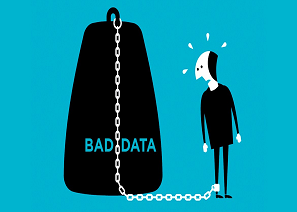If you’ve been in the ecommerce business long enough, then you know that the quality of product data your website provides impacts its natural search performance across search engines. Organic search rankings are affected not only by obvious details that directly contribute to SEO,but also by factors that impact URLs, internal linking, and textual content—product data included.

Product details such as category, group, and specific attributes are usually assigned to individual products when they are loaded up into the system. After this initial input, the data provided is usually managed by ticking the right boxes and editing fields set by the product management system. Each of these check boxes and fields naturally triggers how product data is expressed on the website, which in due course affects SEO one way or another.
Take a product detail page for a pair of wedge sneakers, for instance. Initially, the product might be assigned categories like ‘sneakers,’ ‘wedges,’ ‘women’s shoes,’ and ‘new arrivals.’ Multiple instances can be considered beneficial in terms of product data expression and how the product is presented outwardly for actual user navigation. Equally important but harder to see, however, is how these kinds or product data are interlinked, classified, and labeled by search engines—and which links actually contribute to the product’s contextual relevance. This can pose issues when dealing with products and services with ambiguous classifications and categories—products and services that can be classified as one or another.
It is a well-known fact that there is a common problem of duplicate content in ecommerce sites. Depending on how product data expressions are implemented, certain product details can create multiple duplicate URLs based on the various click paths and categories under which the automated product management system has assigned them.
The good news is that duplicate URL issues can be remedied and controlled using 301 redirects and canonical tags, which can help force one URL on a particular product page based on its default canonical order. This requires identifying all URLs of a product either by crawling the site or using the most recent crawl data and looking for multiple instances of product names and/or numbers.
After multiple instances have been determined, performing a site search query is in order. Navigate around your site and click on various combinations of categories and/or filter attributes that lead you to the same product. If URLs change, then you might have duplicate content issues.
Before completely getting rid of your duplicate content pages, take time to see whether your ecommerce site can benefit from such kind of product data expression (internal linking or product detail page labeling). Check whether an entirely new or more comprehensive tagging could lead to stronger SEO, despite the prospect of retagging a whole product mass. It also pays to know whether or not your product data expressions are actually contributing to your duplicate content issue.
Getting to the root of product data problems can be difficult, but it pays starting to investigate now rather than later if you want to save your site from the penalties and the wealth of other problems that duplicate content bring. If issues get too technical for you and your team, it is best to seek the help of experienced professionals who know how to get to the bottom of duplicate content issues. SEOValley can help.
Done properly, good SEO can turn your challenging dilemma around and make duplicate content work for instead of against your ecommerce business. If you’ve recently been flagged by Google because of duplicate content, consider seeking the help of SEOValley. Our search engine optimization specialists know how to tap into your website’s potential.





